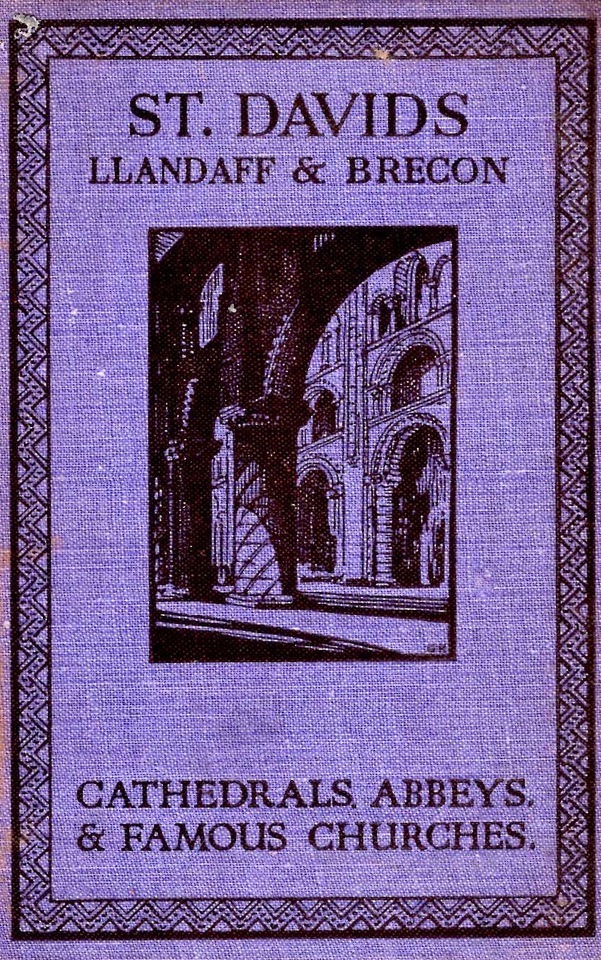#st.davids
Text


Sunset in St.davids

#st.davids#sunset#timelapse#sky#wales#Sea#oceancore#pretty colours#photography#my photos#pembrokeshire
12 notes
·
View notes
Photo
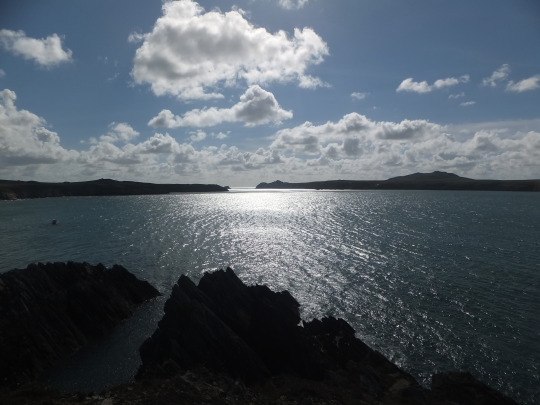
Welsh mainland to the left and Ramsey Island to the right. The rocks that are just visible along the shoreline of Ramsey are known as ‘The Bitches’. I think I’d read about them ages ago. I think that whole channel is quite known for being a mariner’s nightmare. Wikipedia says of ‘The Bitches’:
Water between Ramsey Island and the Welsh coastline is squeezed over a sea bed that changes height dramatically. During the change of tides this causes the water to flow at a rate of up to 7 knots (13 km/h). A set of rocks further constricts the water, especially during higher tides, and this causes hydraulics to form in the shape of glassy standing waves and broken waves (also known as stoppers).
3 notes
·
View notes
Text
To celebrate St.David’s day, here’s me as a kid in my Welsh Lady costume~

It’s from a local paper back then. All the school kids would dress up for the day and have their photo taken. The hats were always so cool but the lace itched so badly hahaha
#welsh#wales#st.david's day#I think I'm about 9 or 10 here#my school was very very small so age groups were put together#for example the year group below mine had only two girls#very small school lmao
3 notes
·
View notes
Text
Open Box - March 1st - St David's Day Quotation by Richard Burton
威爾士人都是演員。只有壞人才會成為職業球員。理查伯頓Wēi’ěrshì rén dōu shì yǎnyuán. Zhǐyǒu huài réncái huì chéngwéi zhíyè qiúyuán.
વેલ્શ બધા કલાકારો છે.તે ફક્ત ખરાબ લોકો છે જે વ્યાવસાયિક બને છે. Vēlśa badhā kalākārō chē.Tē phakta kharāba lōkō chē jē vyāvasāyika banē chē.
Les Gallois sont tous des acteurs. Il n’y a que les méchants qui deviennent professionnels.
Os galeses são todos atores. São apenas os maus que se…

View On WordPress
#Art Music Photography Poetry Quotations#Goff James Art Music Photography Poetry Quotations#goffjamesart#March 1st.#Quotation#Richard Burton#St.David&039;s Day#Wales
0 notes
Text

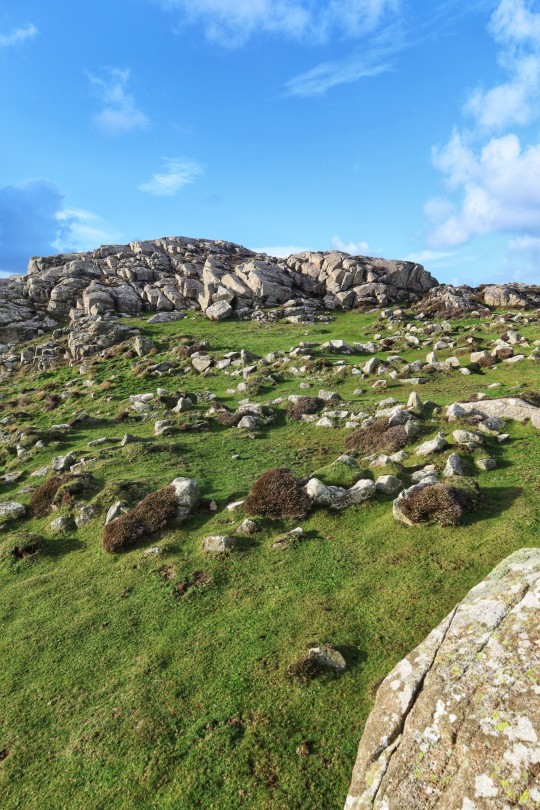
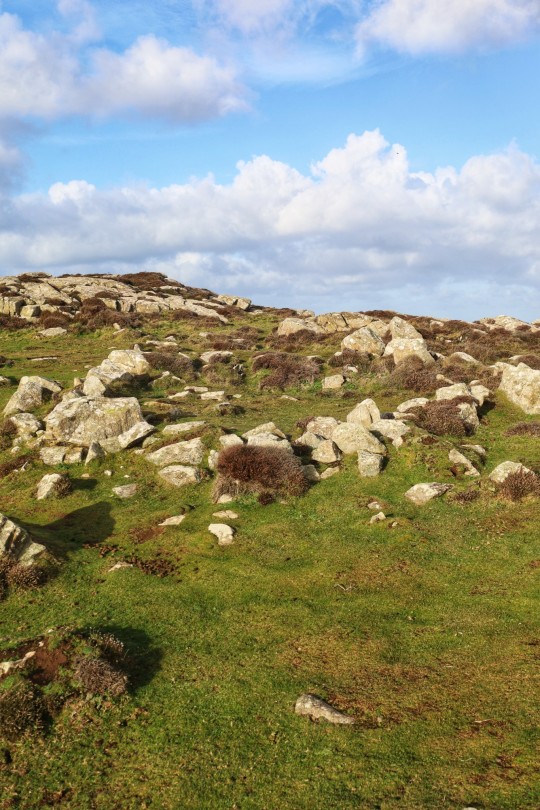


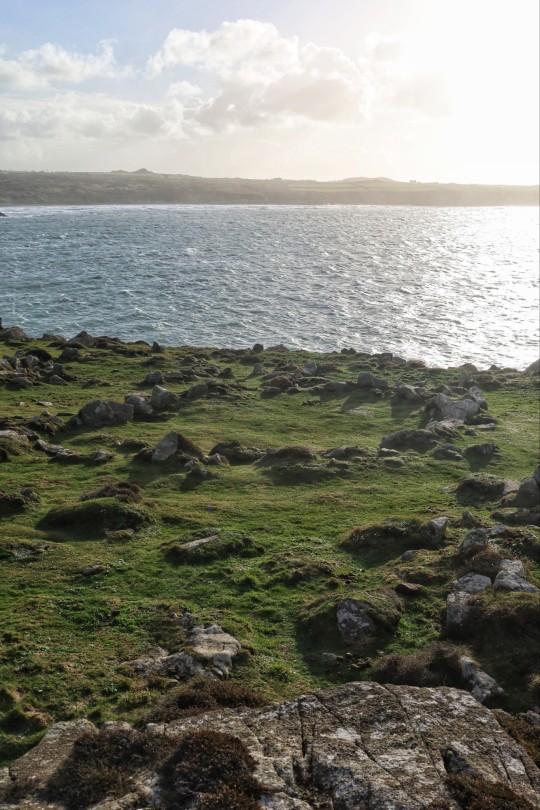

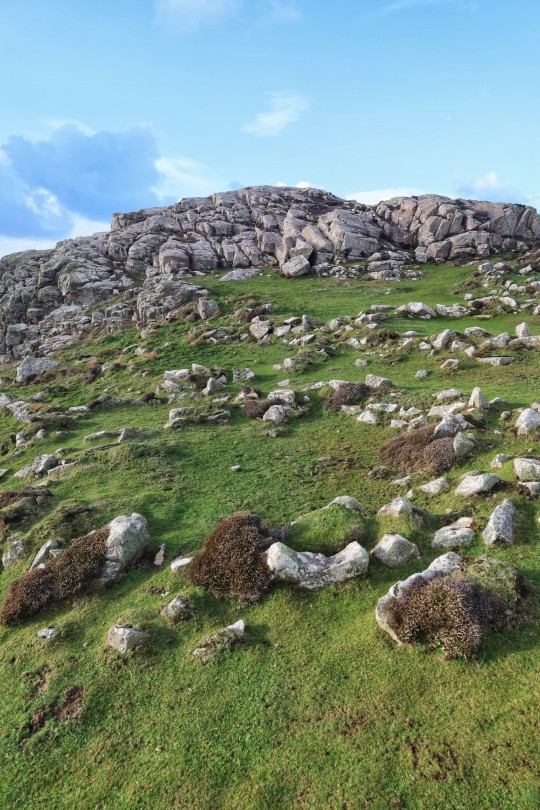
St. David's Head Prehistoric Hut Circles and Promontory Fort, St.David's Head, Pembrokeshire, Wales
#ice age#stone age#bronze age#copper age#iron age#neolithic#mesolithic#calcholithic#paleolithic#prehistoric#prehistory#hut circles#settlement#roundhouses#archaeology#landscape#outdoors#wild places#promontory fort#defensive#ancient culture#ancient craft#ancient living#coastal#coastline
118 notes
·
View notes
Photo
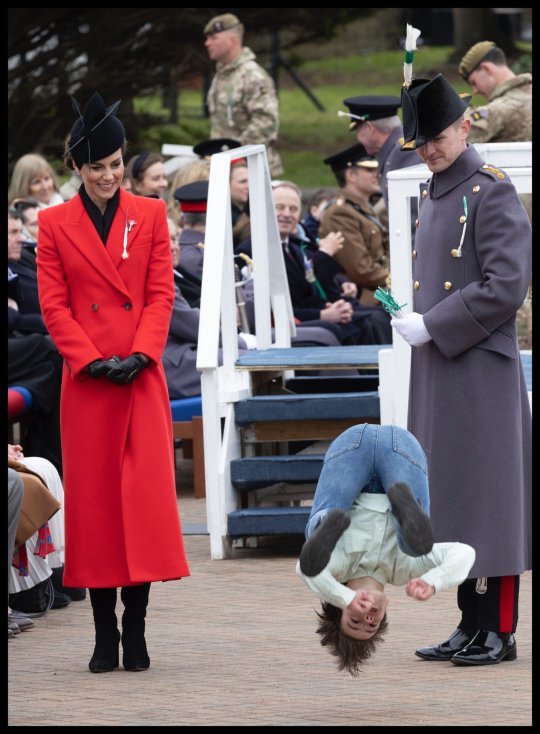

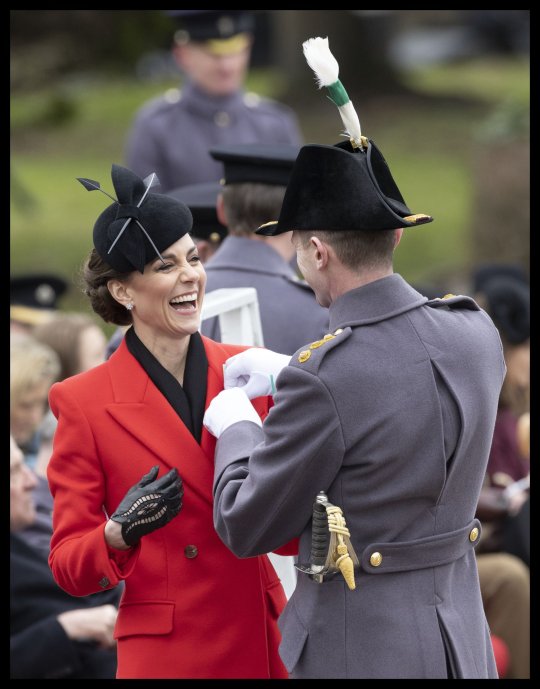
Stephen Lock's pictures of the Princess of Wales during the St.David's Day parade at the Welsh Guards in Windsor. #Royals #kate #PrincessofWales #StDavidsDay #PrincessCatherine -- i-Images Picture Agency
#catherine elizabeth#princess catherine#princess of wales#princess catherine of wales#catherine the princess of wales#william arthur philip louis#prince william#prince of wales#prince william of wales#william the prince of wales#prince and princess of wales#william and catherine#kensington palace
125 notes
·
View notes
Text

Happy St.David’s Day! 'Dydd Gŵyl Dewi Hapus '
Symbols of Wales - daffodils and leeks (daffodils are Wales' national flower), some Welsh people will wear a leek (a vegetable from the onion family) in their hats! All taking part in a parade to celebrate St David’s Day, the patron saint of Wales 🏴
Fri, 1st March 2024
#StDavid’sDay
5 notes
·
View notes
Text

Rough little piece I did for St.David’s day!
🏴Cymru am byth🏴
8 notes
·
View notes
Text

Dydd Gŵyl Dewi Hapus i pawb. Have a happy and peaceful St.Davids Day from all of us at L-B&H.
🌼🌼🌼
0 notes
Photo
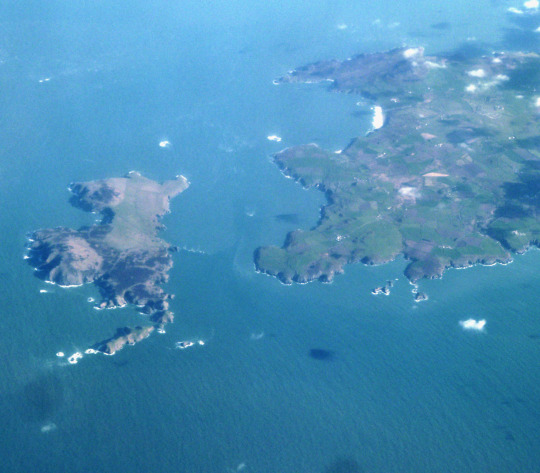
Ramsey Island and St.David's peninsula
The westernmost tip of southern Wales, UK.
0 notes
Text
Stunning Appearance at Saint David’s Day
Both the Princess and her Prince made a stunning appearance at the St.David’s Day festivities… Many in the States and even some of those in the UK are unfamiliar so let me engage in a bit of enlightenment here for some edifications.
Saint David’s Day is an annual Welsh cultural and religious festival celebrated on March 1st. This day commemorates the life of the patron saint of Wales, Saint…

View On WordPress
0 notes
Text
Saints&Reading: Tuesday, October 18, 2022
october 18_october 5
VENERABLE FATHERS AND MOTHERS OF THE KLARJETI WILDERNESS (9th c.)
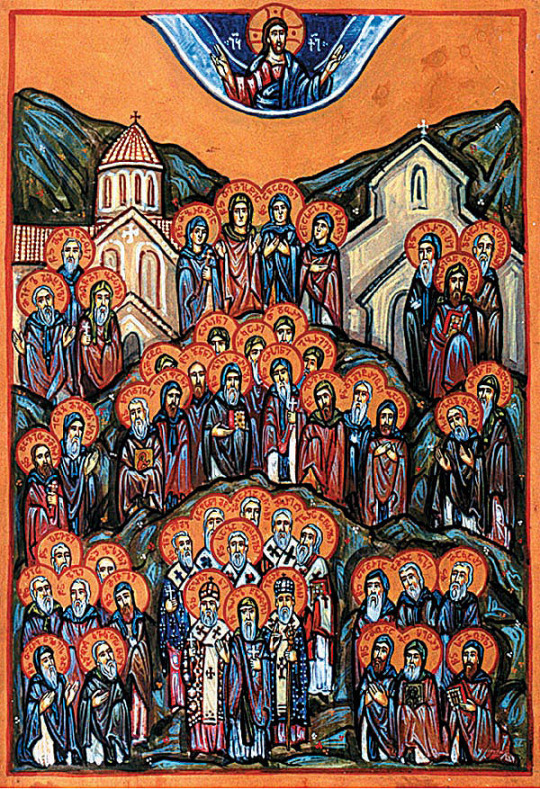
For centuries the region of Tao-Klarjeti in southwestern Georgia was known for its holiness, unity and spiritual strength. The cultural life and faith of Kartli were nearly extinguished by the Arab-Muslim domination from the 8th to 10th centuries. Tao-Klarjeti, however, which had been emptied by a cholera epidemic and the aftermath of the Islamic invasions, filled with new churches and monasteries, becoming a destination for many Christian ascetics. St. Ekvtime Taqaishvili wrote that “Every monastery included a school and a seminary where the Christian Faith, philosophy, Greek and other foreign languages, chant, calligraphy, fine arts, jewelry making, and other disciplines were taught. Countless priests, translators, miniaturists, and jewelry makers developed their craft in these schools.”
The prayers of the Tao-Klarjeti monastics multiplied and were lifted up to the heavens like holy incense. Hagiographical works were written, original hymns composed, and theological texts translated. The literature of this period was thoroughly infused with the spirit of the Georgian people. Tao-Klarjeti reinvigorated the soul of the Georgian people and redirected the lost back to the true path.
St. Grigol of Khandzta, a priest of great virtue and wisdom, spearheaded this spiritual revival. He was a good shepherd to his flock and the builder of many churches. The Lives of St. Grigol of Khandzta and the other holy fathers and mothers of Tao-Klarjeti are recounted in St. Giorgi Merchule’s work The Life of St. Grigol of Khandzta. Giorgi Merchule labored in the Khandzta wilderness in the 10th century. His epithet, “Merchule,” means “the theologian” or literally “the knower of the law.”
Giorgi Merchule also provided the Church with the Life of Holy Catholicos Nerse III, an Armenian by descent. Nerse confessed the Orthodox Faith and labored in Tao-Klarjeti with the Georgian fathers. (At that time many Orthodox Armenians fled to Tao-Klarjeti after being exiled from their homeland.) In the first half of the 7th century St. Nerse laid the foundations of Ishkhani Church and labored there in holiness.
Holy Catholicos Ilarion was the founder and abbot of Tsqarostavi Church and a disciple of Grigol of Khandzta. He arrived at Khandzta Monastery with his spiritual father, St. Davit, Abbot of Midznadzori Monastery, and St. Zakaria, the builder of Beretelta Church. Those who witnessed the fathers’ unity and piety abandoned the world to join them in offering their lives to God. In the middle of the 9th century St. Ilarion was enthroned as Catholicos of Kartli in recognition of his wisdom and holiness. He followed Gabriel II (ca. 830–850) and was succeeded by Arsen I “the Great” (ca. 860–887) in this most honorable role.
St. Stepane of Tbeti was the first bishop of Tbeti. He was a major writer and hagiographer in the Church of his time and a brilliant figure of the Tao-Klarjeti literary school. St. Stepane is credited with authoring the narrative The Martyrdom of St. Gobron.
From his childhood St. Zakaria of Anchi was filled with love and fear of God. Strict in his discipline but free from every constraint of this world, he led the life of a shepherd like St.David the Psalmist. As a child, St. Zakaria would gather his friends and relate with precision the words and scenes he had witnessed in churches and monasteries. Once the bishop of Anchi observed this unusual pastime and reported seeing a pillar of light descend fromthe heavens and alight atop St.Zakaria’s head.
When he reached a mature age, St. Zakaria became the spiritual leader of his brothers. Through his prayers many miracles were performed: he stopped the stone wall of a collapsing building from crashing to the ground, eliminated the troublesome birds and grasshoppers from the monastery’s vineyard, and killed two venomous snakes that were keeping his frightened brothers from the vineyard. Filled with good faith and virtue, St. Zakaria was later consecrated bishop of Anchi.
St. Makar of Anchi served as bishop of Anchi following the repose of St. Grigol of Khandzta in 861.
St. Ezra of Anchi, of the noble Dapanchuli family, labored in holiness during the 10th century.
St. Saba of Ishkhani was a cousin and one of the closest companions of St.Grigol of Khandzta. Along with two other friends, Kristepore and Tevdore, the young Saba accompanied Grigol of Khandzta to Klarjeti on a quest for the ascetic life. At first the young monks settled at OpizaMonastery and labored there with great zeal, and afterwards they moved to Khandzta.
Once St. Saba made a pilgrimage with St. Grigol to Byzantium, and there he learned the typica of the local monasteries. On the way back to Tao-Klarjeti, God revealed to them His will for Saba to restore Ishkhani Church, which had been destroyed by Arab-Muslim invaders. St. Saba desired to begin this holy task at once, but he continued on the way with St. Grigol at the latter’s insistence.
Later, Grigol assigned two monks to help Saba restore the church and sent the three of them to Ishkhani. By God’s grace, the brothers restored the church and monastery and the number of monks who labored there multiplied. Before long their abbot, St. Saba, was consecrated bishop of Ishkhani.
St. Ioane the NewMartyr for Christ labored at KhandztaMonastery.
While he was journeying to Jerusalem on a pilgrimage, the Saracens captured him in Baghdad and attempted to torture him into a denial of the Christian Faith. But by shedding his blood St. Ioane demonstrated his immutable fidelity to the Faith of our Savior.
St. Tevdore, Founder of Nedzvi Monastery, and St. Kristepore, Founder of the Dviri Monastery of St. Cyricus, were spiritual sons of St. Grigol of Khandzta and the first men to join him in his holy labors. With St. Grigol they labored first at Opiza and later at KhandztaMonastery.
These holy fathers journeyed to Abkhazeti to increase the fullness of the Faith in that region, and on their way, in Samtskhe, an aristocrat named Mirian entrusted them with the care and upbringing of his son, the six-year-old Arsen (later Holy Catholicos Arsen the Great).
Eventually St. Grigol of Khandzta desired the return of Tevdore and Kristepore, and he traveled to Abkhazeti to find them. St. Grigol took with him his young disciple Eprem (later the bishop and wonderworker of Atsquri). When he met the brothers in Abkhazeti, St. Grigol entrusted them with Eprem’s upbringing and made them vow not to leave Khandzta Monastery until Eprem and Arsen had reached maturity.
When Eprem and Arsen reached manhood they were “perfected in wisdom,” and Tevdore and Kristepore left Khandzta to establish the Nedzvi and Dviri Monasteries. There each father labored until the day of his repose.
Holy Fathers Giorgi, Amona, Petre, and Makar labored in the wilderness of Opiza. Abba Giorgi was abbot of Opiza’s St. John the BaptistMonastery during the two years St. Grigol of Khandzta and his companions labored there. Fr. Giorgi was the third abbot of the monastery (he was succeeded by St. Andria and St. Samoel). Through God’s grace Abba Giorgi recognized the pilgrims’ faith and received them, not as pupils, but as honorable and wise elders. Witnessing the ascetic feats of the venerable fathers of Opiza, St. Grigol increased in virtue and humility, and acquired inner peace. (History has preserved a Holy Gospel from the Opiza Wilderness that has been dated to the year 913, around the time that Abba Giorgi was laboring there.)
In the second part of the 9th century St. Serapion of Zarzma founded Zarzma Monastery in Samtskhe. St. Serapion’s nephew, St. Basil, later performed great ascetic feats and worked miracles at that monastery. St. Basil authored The Life of Serapion of Zarzma and recounted the lives of the other venerable fathers of Zarzma as well.
St. Giorgi, “a brilliant and kindhearted man of great virtue,” succeeded St. Serapion as abbot of Zarzma Monastery. After St. Giorgi, the Venerable Abbot Mikael began building a second church in Zarzma, in fulfillment of St. Serapion’s prophecy. St. Pavle, who followed Mikael as abbot of the monastery, completed construction of this second church.
The holy and righteous St. Khvedios labored as a hermit in the caves of the KhandztaWilderness. God revealed to him the news of St. Grigol’s arrival, and he received Grigol and his brothers with great joy.
He blessed them, while receiving a blessing himself from St. Grigol of Khandzta. Then, rather than journeying on with St. Grigol and the other brothers, St. Khvedios retired to his secluded cave, since he had taken a vow before God to live his whole life in solitude. After the holy father reposed, his dwelling place filled with a sweet fragrance.
St. Epipane was a wonderworker and a spiritual son of St. Grigol of Khandzta. This venerable father was truly clad in the armor of righteousness, and he was an inspiration to many. According to St. Grigol’s instructions, he became an example of obedience for the other brothers of the monastery. St. Epipane’s prayers healed many who were afflicted by terminal illnesses.
St. Mato labored in the KhandztaWilderness. After the abbess of Mere Monastery reposed, he took upon himself leadership of the women’s monastery and for forty years set an example of life lived in the fullness of the Faith. He was so strict in his asceticism that, for those forty years, he never once shared a meal with the mothers, nor did he receive a single object from any of their hands. When St. Mato reached an advanced age, he became diseased in the flesh, but he declined the nuns’ offers to care for him. Instead he asked his relative, also a monk, to attend to him in his time of need.
St. Zenon was born in Samtskhe to a family of aristocrats. He was raised in the fear of God, and he desired from his youth to enter the monastic life. Before this desire was fulfilled, however, his sister was kidnapped by a certain godless man. Zenon set off to pursue the abductor on horseback, but while he was riding the devil began to assault him with anxieties. “I am a respectable man,” he thought, “but the one whom I am following is dishonorable. If I catch and kill him, I will destroy my soul, but if I turn back, shame will come upon me.”
And so, at that very moment, St. Zenon turned back to fulfill his lifelong desire. He was tonsured a monk and later became a disciple of St. Grigol of Khandzta.
St. Zenon, the “Treasure of Virtue, Holy Model of Asceticism and Gate of the Klarjeti Wilderness,” reposed at an advanced age.
St. Ioane, Abbot of Khandzta, is celebrated for having completed construction of the new church at Khandzta that was begun by his predecessor, St. Arsen. Both holy fathers reposed in the KhandztaWilderness. St. Tevdore the Abbot and his brother St. Ioane both labored at Khandzta Monastery. St. Giorgi Merchule recognizes the brothers as historians, however, believe that they were contributors, rather than coauthors, of this work.
The monk St. Gabriel ministered to the infirm and elderly monks of Khandzta Monastery. St. Gabriel verbally recounted the Lives of the great Church Fathers and admonished his brothers to follow the same strict disciplines as the fathers who had gone before them.
St. Demetre was raised by the blessed St. Pebronia and later became one of St. Grigol of Khandzta’s first disciples. He is commemorated among the holy fathers for having attaining the heights of the monastic struggle and for working wonders, both in this life and after he had been received into the bosom of Abraham.
Sts. Arsen and Makar, “good monks full of wisdom and the gift of wonder-working,” were relatives of St. Eprem of Atsquri. They labored together at St. Sabbas Monastery in Jerusalem and corresponded regularly with the monks of Khandzta. Sts. Arsen and Makar possessed a profound love for Christ and a longing to serve their motherland and mother Church.
St. Shio the Wonderworker “shone upon the land of Kartli like the North Star in the morning sky.” According to Basil of Zarzma, St. Shio was the spiritual father of St. Mikael of Parekhi.
Sts. Basil and Markelaos, “abounding and brilliant in virtue,” were disciples of St. Mikael of Parekhi. St. Basil was buried in Parekhi next to his spiritual father. Both fathers worked miracles from their graves and healed the infirmities of the faithful who came to seek their blessings.
Venerable Father Davit, “an image of the angels” and builder of many monasteries, labored as abbot of Midznadzori Monastery. He was the spiritual father of the holy catholicos Ilarion.
Endowed with many gifts of grace, St. Iakob was a prominent figure in the tenth-century Georgian Church. He labored first in Shatberdi, and later near Midznadzori Gorge, where he shone forth as the brightest of stars.
Venerable Sopron the Great was the restorer of the Shatberdi Church and a famous writer, but his literary works have not been preserved. St. Giorgi Merchule numbers him among the wise and holy fathers whose stories are worthy to be told. St. Grigol of Shatberdi labored at the same monastery. Several of the tenth-century manuscripts copied by him at Shatberdi Monastery have been preserved, including the Notebooks of the Shatberdi Wilderness and the Gospels of Hadishi, Jruchi, and Parekhi.
St. Zakaria built the famous Beretelta Monastery and set an example of wisdom and holiness for the fathers who labored there after him.
St. Giorgi Merchule honors the venerable and God-fearing St. Ilarion of Parekhi as one of the greatest writers and figures in the Church of his time.
St. Ilarion, Abbot of Ubisi, labored for many years at the Lavra of St. Sabbas in Jerusalem, where the Georgians had their own chapel for many centuries[1]. After he had reached an advanced age, the venerable father moved to Georgia and settled at Khandzta Monastery. Later this clever and learned father began construction of Ubisi Church in Imereti, where he labored until his death.
St. Pebronia labored at Mere Monastery in Samtskhe. She was a close friend of St. Grigol of Khandzta. He sent to her a certain woman whom King Ashot Kuropalates (later the holy martyr) had taken as his mistress, to instruct her in the Christian Faith. St. Pebronia denied the king’s pleas to return the woman to the royal palace.
Angels often visited St. Pebronia to inform her of God’s holy will. St. Temestia labored with St. Pebronia at Mere Monastery. For forty years she ministered to St. Mato, the spiritual father of the monastery.
St. Temestia herself remarked that her relationship with Father Mato was so chaste and innocent that the holy father would not even permit himself to receive the holy incense directly from her hands.
St. Anatole (also called Antonios) labored in seclusion at Mere Monastery. Angels often appeared to the holy mother, who herself led a life equal to that of the bodiless powers. Both venerable Temestia and Anatole were informed by angels of the repose of their abbot, St.Mato.
St. Anastasia labored among the holy mothers in remarkable sanctity and humility. She descended from an Abkhaz family and was known as Bevreli in the world. As queen (the wife of King Adarnerse) she was often called upon to protect the interests of Mere Monastery. King Adarnerse later grew cold towards Bevreli, so she left the world and was tonsured a nun with the name Anastasia.
St. Anastasia bore the most difficult labor at the monastery: she gathered the firewood and carried it from the forest. She wore only rags and prayed constantly.
Once King Adarnerse suddenly fell ill, and he sent messengers to Persati Monastery, where Anastasia was laboring, asking forgiveness on his behalf. St. Anastasia prayed for the sick king: “May Christ forgive all his sins and heal him in soul and body.” King Adarnerse was soon healed of his infirmity.
Abounding in holiness and humility, St. Anastasia labored at PersatiMonastery to the end of her days on earth. God granted her the gift of wonder-working both during her life on earth and after her repose. St. Anastasia’s own sons, Gurgen and Sumbat, were cured of their diseases at her grave, and afterwards many more who came with faith received healing from the holy mother.
The historical region of Tao-Klarjeti has throughout history, and even up to the present day, been inhabited by ethnic Georgians. However, since 1921, when the Communists annulled the independence of the Georgian Republic, Tao-Klarjeti has been a Turkish possession.
God endowed this region with abundant sunshine and clear air, free from cruel heat and bitter frost. The local climate heightens the beauty of this wondrous region.
But Tao-Klarjeti has been transformed into a battlefield countless times throughout history: it has witnessed victory and defeat, destruction and restoration, treason and selfless loyalty. Through all these trials it has remained an inseparable part of the unified Georgian nation. In spite of the fact that, today,Tao-Klarjeti is located within the borders of a foreign government and itsGeorgian dioceses are often referred to as belonging to the Armenian Church, the historical truth must be upheld.
On October 17, 2002, the Georgian Apostolic Church nominally restored the dioceses of Klarjeti and Lazeti to its own jurisdiction and declared the incumbent bishop of Akhaltsikhe to be their spiritual leader. On the same day, the Georgian Church canonized the holy and venerable fathers and mothers who labored in those regions under the leadership of St. Grigol of Khandzta. Only a few of the God-fearing laborers, among them Holy Catholicos Nerse II, were Armenian by descent, but they had converted to Orthodoxy and preached the true Faith in the wilderness with the Georgian fathers.
Through the intercessions of the holy fathers and mothers of the Klarjeti Wilderness and all Thy blessed saints, Lord Jesus Christ our God, have mercy on us and save us!
[1] See Archimandrite Grigol Peradze, “An Account of the Georgian Monks and Monasteries in Palestine,” Georgica, Autumn 1937, nos. 4–5, pp. 181–246.
Archpriest Zakaria Machitadze
Source: Pravoslavie
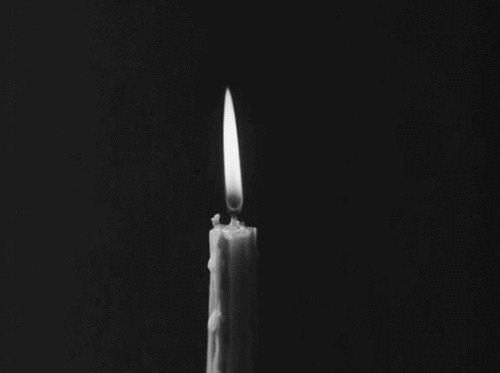

MATTHEW 5:14-19
14 You are the light of the world. A city that is set on a hill cannot be hidden. 15 Nor do they light a lamp and put it under a basket, but on a lampstand, and it gives light to all who are in the house. 16 Let your light so shine before men, that they may see your good works and glorify your Father in heaven. 17 Do not think that I came to destroy the Law or the Prophets. I did not come to destroy but to fulfill. 18 For assuredly, I say to you, till heaven and earth pass away, one jot or one tittle will by no means pass from the law till all is fulfilled. 19 Whoever therefore breaks one of the least of these commandments, and teaches men so, shall be called least in the kingdom of heaven; but whoever does and teaches them, he shall be called great in the kingdom of heaven.
HEBREWS 13:17-21
17 Obey those who rule over you, and be submissive, for they watch out for your souls, as those who must give account. Let them do so with joy and not with grief, for that would be unprofitable for you. 18 Pray for us; for we are confident that we have a good conscience, in all things desiring to live honorably. 19 But I especially urge you to do this, that I may be restored to you the sooner. 20 Now may the God of peace who brought up our Lord Jesus from the dead, that great Shepherd of the sheep, through the blood of the everlasting covenant, 21 make you complete in every good work to do His will, working in you what is well pleasing in His sight, through Jesus Christ, to whom be glory forever and ever. Amen.
PHILIPPIANS 1:8-14
8 For God is my witness, how greatly I long for you all with the affection of Jesus Christ. 9 And this I pray, that your love may abound still more and more in knowledge and all discernment, 10 that you may approve the things that are excellent, that you may be sincere and without offense till the day of Christ, 11 being filled with the fruits of righteousness which are by Jesus Christ, to the glory and praise of God. 12 But I want you to know, brethren, that the things which happened to me have actually turned out for the furtherance of the gospel, 13 so that it has become evident to the whole palace guard, and to all the rest, that my chains are in Christ; 14 and most of the brethren in the Lord, having become confident by my chains, are much more bold to speak the word without fear.
1 note
·
View note
Text
Open Box – Happy St. David's Day – March 1st. Greeting’s Message from Goff James
March 1st. Greetings
Happy St. David’s Day Everyone
We live in our own world,A world that is too smallFor you to stoop and enterEven on hands and knees,The adult subterfuge.And though you probe and pryWith analytic eye,And eavesdrop all our talkWith an amused look,You cannot find the centreWhere we dance, where we play,Where life is still asleepUnder the closed flower,Under the smooth shellOf…

View On WordPress
#Art Music Photography Poetry Quotations#Flag#Goff James Art Music Photography Poetry Quotations#goffjamesart#Greetings#March 1st.#Music#Photograph#Poem#St.David&039;s Day#Welsh Dragon#Welsh Harp Music
0 notes
Text
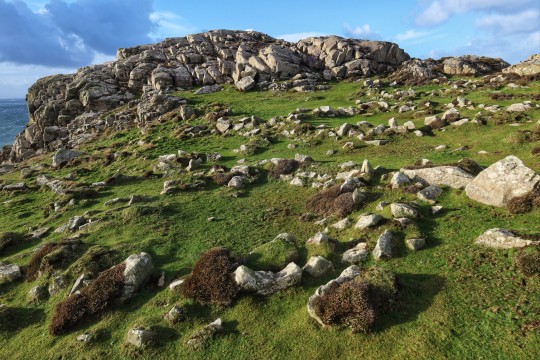
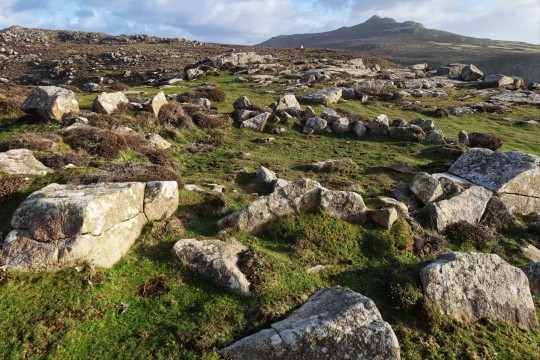
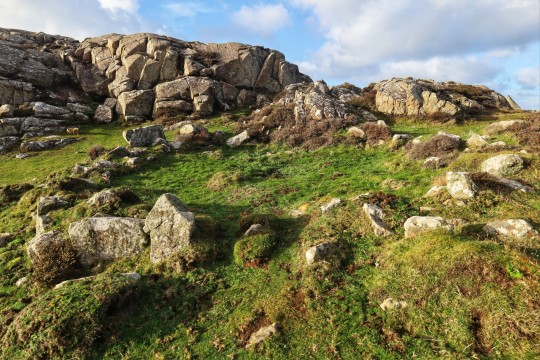
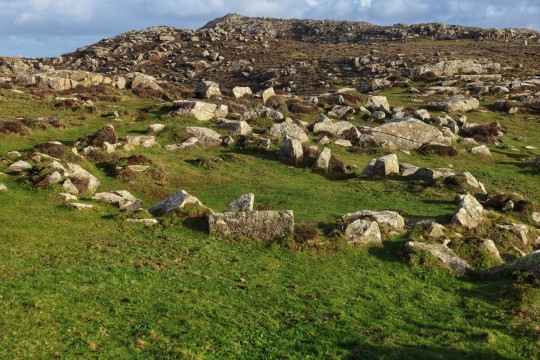


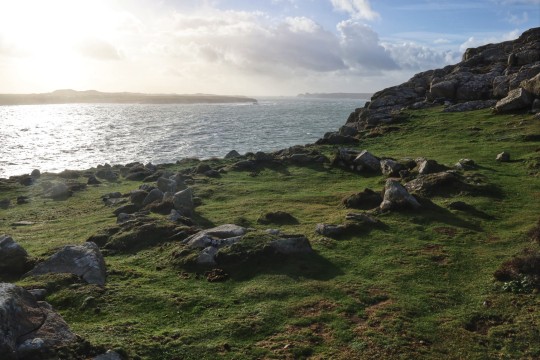
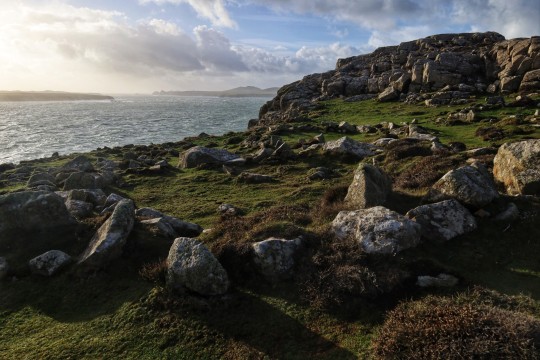
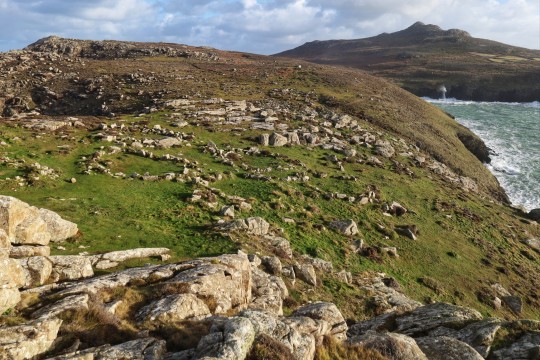

St. David's Head Prehistoric Hut Circles and Promontory Fort, St.David's Head, Pembrokeshire, Wales.
#ice age#stone age#bronze age#copper age#iron age#neolithic#mesolithic#calcholithic#paleolithic#prehistoric#prehistory#hut circles#roundhouse#settlement#promontory fort#ramparts#landscape#coastline#outdoors#wild places#wales#nature#archaeology
96 notes
·
View notes
Photo
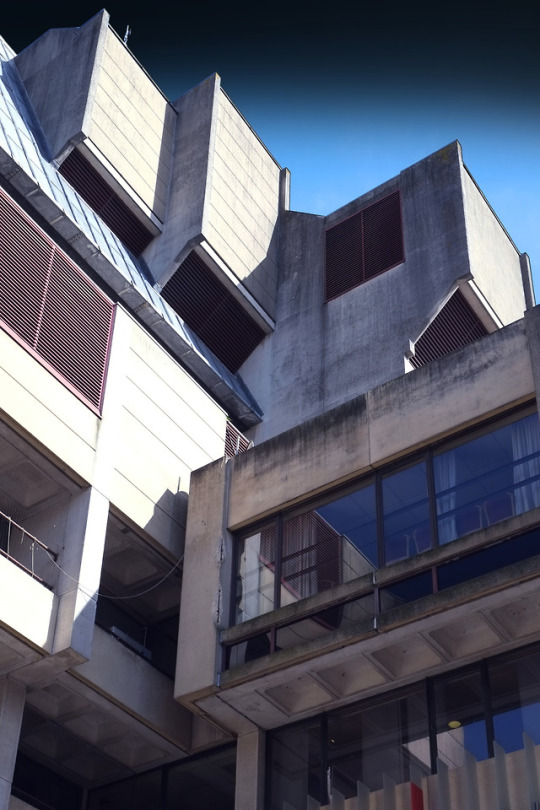
St David’s Hall, Cardiff
Weronika Dudka
112 notes
·
View notes
